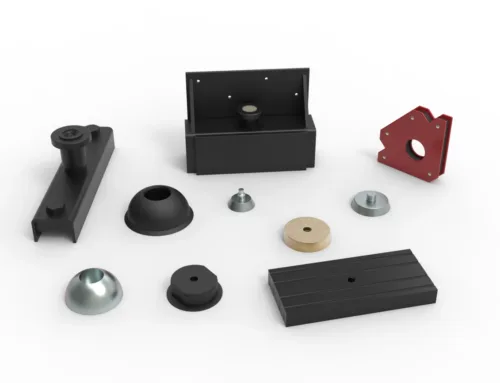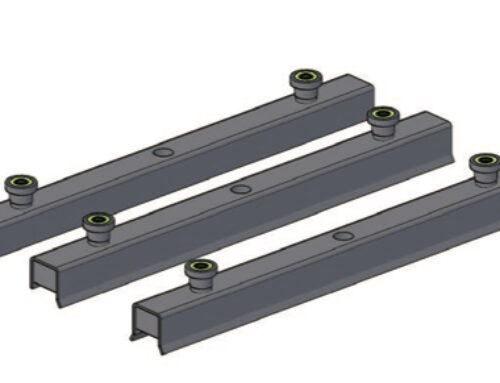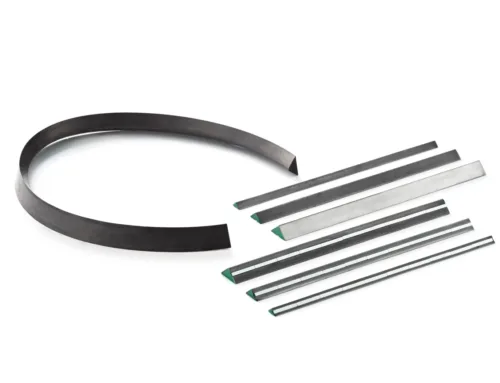What Are Magnetic Technologies
Magnetic technologies refer to a wide range of tools, devices, and systems that use magnetic fields to perform specific functions in industries, electronics, transportation, energy, and healthcare. They are built on the basic principles of magnetism— the force generated by moving electric charges or the intrinsic magnetic properties of certain materials.
Basic Principles of Magnetism
Magnetism arises from the motion of electrons and their spin. Some materials naturally align their atomic magnetic moments, making them strongly magnetic, while others respond only when influenced by external magnetic fields. The main types include:
- Ferromagnetism – Strong, permanent magnetism found in materials like iron, cobalt, and nickel.
- Electromagnetism – Magnetism generated by electric current flowing through a coil of wire.
- Paramagnetism and Diamagnetism – Weak magnetic responses to external fields, explained in more detail in diamagnetic vs paramagnetic materials.
Types of Magnetic Materials
Magnetic technologies rely on different types of magnet materials, each with specific strengths and applications:
- Permanent Magnets – Maintain a magnetic field without electricity. Common in motors, generators, and sensors.
- Soft Magnets – Easily magnetized and demagnetized, ideal for transformers and electromagnetic shielding.
- Rare Earth Magnets – Include Neodymium (NdFeB) and Samarium-Cobalt (SmCo) magnets, known for extremely high magnetic strength and used in advanced electronics, EV motors, and wind turbines.
- Ferrite Magnets – Cost-effective, corrosion-resistant, and widely used in speakers, magnetic assemblies, and small motors.
By combining these principles with modern engineering, magnetic technologies enable innovations across sectors, from precision medical imaging to high-speed transportation. Understanding the types of magnetic materials helps in selecting the right solution for each application.
Key Magnetic Technologies and Their Applications
Magnetic technologies power a wide range of industries in the U.S., from electronics to transportation. Each application uses specific types of magnetic materials and designs to achieve high performance and reliability.
Magnetic Sensors and Actuators
In electronics and automation, magnetic sensors track position, speed, and movement with precision. Actuators convert electrical signals into motion, making them essential in robotics, automotive systems, and industrial machinery. These are widely used in smart manufacturing and vehicle safety systems.
Magnetic Storage
Traditional hard drives rely on magnetic disks to store data, and newer designs push the limits of density and speed. Innovations in magnetic storage technology help keep costs down while meeting the growing demand for secure, high-capacity storage.
Magnetic Separation and Filtration
Manufacturing and environmental operations use magnetic separators to remove metal contaminants from products or wastewater. This technology plays a big role in food processing, mining, and recycling, improving product safety and reducing waste.
Magnetic Levitation Transportation
Maglev trains use high-powered magnets to lift and propel cars without physical contact, resulting in faster travel and lower maintenance. While still emerging in the U.S., this technology is advancing thanks to global developments in magnetic levitation systems.
Renewable Energy Applications
Wind turbines use large permanent magnets, especially rare earth magnets like neodymium, in their generators. Magnetic generators provide efficient, low-maintenance energy production, helping meet renewable energy goals.
Magnetic Medical Devices and Diagnostics
MRI machines are a leading example of magnetic technology in healthcare, producing detailed internal images without radiation. Magnetic nanoparticles are also being developed for targeted drug delivery, improving treatment precision and reducing side effects.
Recent Innovations and Trends in Magnetic Technologies
Magnetic technology is moving fast, and a lot of the newest ideas focus on making magnets more efficient, smarter, and easier on the environment. Here are some of the biggest trends shaping the industry right now:
Rare Earth-Free Magnetic Materials
With rare earth elements getting pricier and harder to source, researchers are pushing for strong magnets that don’t rely on them. These materials aim to deliver similar magnetic strength without the supply chain and environmental challenges tied to mining rare earths.
Magnetic Thin Films and Nanotechnology
Thin magnetic coatings are opening doors in electronics, data storage, and sensing. By managing magnetism at the nano level, devices can get smaller, faster, and more energy-efficient — a big deal for everything from consumer gadgets to industrial equipment.
Smart Magnetic Materials and Spintronics
Magneto-electronics (or spintronics) uses the spin of electrons, not just their charge, to store and process data. This could lead to ultra-fast, low-energy memory and computing systems. Smart materials that change their behavior in response to conditions like temperature or a magnetic field are also starting to appear in sensors and actuators.
AI and Magnetic Sensor Systems
Artificial intelligence is starting to pair with magnetic sensor technology to detect issues, optimize machine performance, and boost automation in manufacturing, robotics, and transport systems. This combination means smarter real-time monitoring and reduced downtime.
Eco-Friendly Magnetic Solutions
Environmental concerns are driving the development of recyclable magnets, non-toxic coatings, and manufacturing processes with a smaller carbon footprint. This is especially important for markets like the U.S., where both performance and sustainability matter.
Importance of Quality Magnetic Materials NBAEM Expertise
At NBAEM, we know that the success of any magnetic technology starts with the quality of the material itself. Whether you’re in manufacturing, medical equipment, renewable energy, or transportation, the right magnet can mean better performance, longer life, and fewer breakdowns.
Our Product Line
We supply a full range of industrial magnetic solutions, including:
- Neodymium magnets – high strength, compact size, perfect for motors, sensors, and electronics.
- Ferrite magnets – cost-effective, corrosion-resistant, ideal for loudspeakers, magnetic filters, and general industrial use.
- Samarium-cobalt magnets – excellent performance in high temperatures, making them a reliable fit for aerospace, defense, and harsh environments.
Quality You Can Rely On
Our manufacturing process focuses on precision, consistency, and durability. We follow strict quality control from raw material selection to the final product, ensuring every magnet meets exact specs. This means dependable magnetic strength, stable performance, and long service life—no guesswork.
Customized Magnetic Solutions
Not every industry runs on the same specs. That’s why we work with businesses to design magnets built for their exact needs—whether it’s a specific shape, coating, magnetic field strength, or heat resistance.
Real-World Applications
Our magnets are already at work in:
- Wind turbines in the U.S. energy sector
- Industrial robotics for precise motion control
- MRI scanners in healthcare
- High-speed motors in electric vehicles
By pairing strong technical capabilities with versatile solutions, NBAEM delivers magnetic materials that match the demands of U.S. industries—from small-scale prototypes to high-volume production runs.
How to Choose the Right Magnetic Materials for Your Industry Needs
Picking the right magnetic material starts with knowing what you need it to do. Each industry—whether it’s manufacturing, electronics, renewable energy, or medical devices—has different demands.
Know Your Magnetic Properties
Before selecting, match the material’s magnetic properties to your application:
- Magnetic strength – Higher strength for compact designs or heavy-duty applications.
- Temperature resistance – Crucial in high-heat environments like motors or turbines.
- Corrosion resistance – Needed for outdoor or moisture-prone settings.
You can dig deeper into types of magnetic materials to understand how each performs.
Key Selection Factors
| Factor | Why It Matters | Best Choice Examples |
|---|---|---|
| High magnetic strength | Strong pull or holding force | Neodymium magnets |
| Heat tolerance | Works in high-temp machinery | Samarium-cobalt magnets |
| Corrosion protection | Withstands moisture and chemicals | Coated neodymium or ferrite magnets |
| Cost efficiency | Lower upfront cost | Ferrite magnets |
Cost and Availability
Rare earth magnets like neodymium and samarium-cobalt are powerful but cost more and rely on global supply chains. If budget or supply stability is a concern, ferrite magnets can be a strong alternative.
NBAEM’s Support
NBAEM offers:
- Material analysis to match strength, heat, and corrosion needs
- Custom manufacturing for specific shapes and performance
- Consultation services to balance cost and efficiency
Choosing the right magnetic material for your industry often means weighing technical performance against cost and supply. With NBAEM’s expertise, you’ll get solutions that hit the sweet spot for your operational needs.
The Future Outlook Magnetic Technologies in China and Global Markets
China plays a major role in the global magnetic materials market, supplying most of the world’s rare earth magnets, including neodymium and samarium-cobalt. This supply strength has made it a key partner for U.S. manufacturers in automotive, electronics, renewable energy, and medical industries that rely on high-performance magnets.
Demand for magnetic technologies is climbing worldwide, driven by electric vehicles, wind turbines, advanced robotics, and next-gen data storage. These sectors are pushing for stronger, more efficient, and more eco-friendly magnetic solutions. Investments in R&D are focusing on rare earth-free alternatives, improved corrosion resistance, and advanced manufacturing methods to reduce costs and environmental impact.
NBAEM is aligning with these trends by expanding production capabilities, investing in sustainable manufacturing, and developing custom solutions for global clients. With a focus on quality, reliability, and innovation, NBAEM aims to meet the growing technical demands of industries while supporting long-term supply stability in both the U.S. and international markets.
Frequently Asked Questions
What industries benefit most from magnetic technologies
Magnetic technologies are used across a wide range of sectors in the U.S., especially where precision, efficiency, and reliability matter. Some of the biggest users include:
- Electronics and automation – sensors, actuators, and motors
- Automotive and transportation – electric vehicles, Maglev trains, ABS systems
- Medical equipment – MRI machines, magnetic drug delivery systems
- Manufacturing and mining – magnetic separation, sorting, and filtration
- Renewable energy – wind turbines and magnetic generators
- Data storage – hard drives and advanced magnetic storage devices
How do rare earth magnets differ from ferrite magnets
- Rare earth magnets (like neodymium and samarium-cobalt) are much stronger, more compact, and work well for high-performance or miniaturized applications.
- Ferrite magnets are less powerful but cost-effective, corrosion-resistant, and perform reliably in high-temperature or outdoor environments.
- In short: rare earth = power and compact size; ferrite = durability and affordability.
Can magnetic materials be recycled or reused
Yes. Many magnetic materials—especially neodymium, samarium-cobalt, and ferrite—can be reclaimed, processed, and reused. U.S. industries increasingly adopt recycling processes to cut costs and reduce the environmental footprint, particularly given the price and supply concerns of rare earth elements.
What are the environmental considerations with magnetic materials
- Mining impact – Rare earth magnet production depends on mining, which can cause environmental damage if not managed responsibly.
- Energy use in production – Manufacturing strong magnets requires significant energy.
- Recycling benefits – Recovering and reusing magnets reduces waste, conserves raw materials, and lowers environmental impact.
- Eco-friendly designs – New magnetic technologies aim to use fewer rare earth elements and more sustainable production methods.





[…] Understanding this vector nature of magnetic force helps in applications like electric motors and particle accelerators, where control of moving charges through magnetic fields is key. For more on magnetic fields and materials, check out magnetic technologies. […]